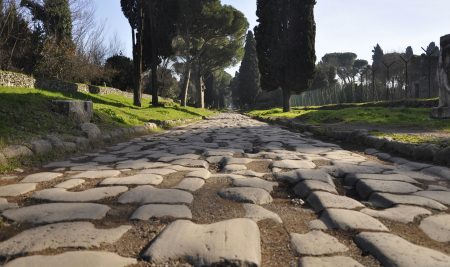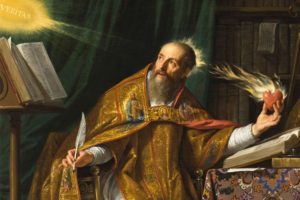Humans are naturally anxious. We feel abandoned and vulnerable in a world where we are destined to die. This was true in the sixteenth century as it is today. Indeed, for all our differences it’s remarkable how we share this basic human experience. To be sure, some anxieties are easily recognized. Others are more difficult to decipher. In both cases, however, we depend on God for the remedy. This too has not changed.
In the face of anxiety, our ears are more keenly attuned to the voice of God, a voice that comes in a particular way: by the preached Word. Of course the preacher is not simply a mouth. He is the proclaimer of God with all of his being—his sincerity, his enthusiasm, his compassion, his tone of voice, his relationship to Christ all come to bear. But the Word of God is the power. God’s Word is the solvent for human anxiety in our day, as it was in sixteenth century Italy.
Preaching in Sixteenth Century Italy
In the opening decades of the sixteenth century, preaching was a central component of gospel renewal, the so-called simplex evangelium. Unlike scholastic thought, or much of Renaissance humanism for that matter—both of which appealed principally to the elite—the communication of Scripture through publishing and proclamation reached into every segment of society. Not only did this great diffusion of knowledge arguably create the modern book and reading culture, it instigated a particular appetite for God’s Word. In this movement, the letters of Saint Paul were the chief sources through which the hunger of human souls was satisfied.[1]
Among the foremost expositors of Scripture during this period was Peter Martyr Vermigli (1499-1562). After ordination and earning his Doctor of Divinity, Peter Martyr was elected to the office of public preacher. This illustrious position enabled him to expound the Bible for a wider audience. During this season he taught himself the Hebrew language, in those days an uphill battle to be sure, with the help of a Jewish doctor named Isaac.[2] So popular did Vermigli’s ministry become that his Augustinian order labeled him an “exceptional preacher.”[3] Likewise, the Neapolitan historian Alfonso Castaldo, who is believed to have heard Peter Martyr personally (Uncle Al, as I like to call him), said he was “learned and eloquent.”[4]
Another important gospel preacher, perhaps the most outstanding of all in Italy, was Bernadino Ochino (also known as Bernadino of Siena, 1487-1564). Ochino had already been a popular preacher in the Franciscan tradition, traveling from city to city, from piazza to piazza, threatening listeners with divine punishment and promoting reconciliations between local factions. But his association with evangelicals in Naples, a circle of friends that Vermigli would soon join, completely transformed Ochino’s preaching ministry. McNair writes:
Two years before [1536], he had joined the Capuchin Order to save his soul by works; since then he had probably been brought to doubt (like Luther twenty years before him) whether any works of his could ever save his soul. Salvation was in Christ, the ‘dolcissimo Salvatore’ [“very sweet Savior”]: but how did Christ save? . . . When Ochino embraced [the doctrine of justification by faith alone] in Naples, Evangelism was brought to birth.[5]
It was in the church of the monastery of San Giovanni Maggiore at Naples in 1536 when Ochino, by this time General of the Capuchins, offered a series of Lenten sermons that were so inspiring that even Charles V commented on them. The emperor, who personally attended on his way home from his Tunisian expedition, left the sermons exclaiming that Ochino’s exposition could make stones weep.[6] Unlike much of Catholic preaching at this time, which relied heavily upon the rhetorical techniques of Cicero and Quintilian,[7] Ochino’s approach “simply couched and deeply felt. . . [proclaimed] the great themes of grace, faith, and works among the common people. They had an impact and were discussed in the streets, and in the marketplaces for days afterward.”[8] The tangible fruit of this ministry was in keeping with what God’s people have always observed during moments of gospel renewal: evangelism.
The Spread of Gospel Renewal
And as we might expect, such preaching spawned a robust commitment to evangelistic outreach. For example, a carpenter named Antonio became an outspoken advocate of Protestant renewal, engaging his neighbors in conversation about faith. He and his evangelical friends—“among them a notary, a tailor, a tutor, a poulterer, an egg-vendor, a knife grinder, an instrument maker, a weaver, a number of silk merchants, and a friar”—met to regularly study the letters of Saint Paul. Before long they refuted the doctrine of purgatory, sacerdotal confession, rosaries, and other sacramental rites which, on the basis of Scripture, they saw as merely superstitious. They also opposed the Roman Catholic teaching on meritorious works as the basis of one’s justification.[9]
Some of these new converts to evangelical faith even had enough chutzpah to engage the Roman Catholic clergy in theological debate. For instance, a certain musician named Zuan Maria da Bologna challenged a Franciscan Friar on the subject of free will, arguing that humans are simply instruments through which God extends redemptive grace. To make his point, he blew his trumpet and then asserted, “If I did not blow on it, it would not make any sound,” underscoring the passive nature of the human will when it encounters the breath of God.[10]
It is perhaps impossible for us to appreciate the unspeakable elation experienced by men and women who heard for the first time in everyday parlance the words of Jesus, “I have come to seek and save the lost.” The evangelical renewal that followed from this message was therefore not simply a revolution of ideas, of new doctrinal tenets. It was an experience in which the voice of God was being heard in the words and idioms of everyday life; a divine announcement of liberating grace that engaged the hearts of people weighed down by anxiety. In this way, the personal dimension of gospel preaching augmented the personal impulse of doctrines such as justification by faith alone.
Gospel Preaching Then and Now
In his article “Religious Restlessness in Sixteenth Century Italy,” Paul Grendler explains how the street level interest in Scripture and personal faith in Italy became allied with the mounting desire for a more vibrant experience of gospel renewal.[11] In this environment, the importance of ceremonies and religious practices receded to make way for the study of Scripture with the gospel of grace at the leading edge. It wasn’t long before the momentum for such reform came from the bottom up, from the personal witness of everyday men and women. This reformatio in membris (reformation in its members) gave birth to a church that was more intellectually alive and more committed to personal preaching of salvation. Such proclamation, as it spread from piazza to piazza, addressed human anxiety with a message of good news.
This, my friends, is what the gospel does. And it happens when all of us together—regardless of our background, social status, age, or industry—articulate the good news that the Savior who died is now alive and lives to impart eternal life to anxious hearts.
Footnotes:
[1] Dermot Fenlon, Heresy and Obedience in Tridentine Italy: Cardinal Pole and the Counter Reformation. (Cambridge: Cambridge University Press, 1972), 3.
[2] Josiah Simler, Life, Letters, and Sermons. Translated and Edited by John Patrick Donnelly. The Peter Martyr Library 5. (Kirksville, MO: Thomas Jefferson University Press, 1999), 17.
[3] “Predicatorem eximium.” Philip McNair, Peter Martyr in Italy: An Anatomy of Apostasy (Oxford: Clarendon Press, 1967), 118.
[4] “Dotto ed eloquentissimo,” Antonio Castaldo, Dell’istoria di notar Antonino Castaldo libri quattro. (Napoli, Nella stamperia di G. Gravier, 1769), 66.
[5] McNair, Peter Martyr in Italy, 34-35.
[6] John Jeffries Martin, Venice’s Hidden Enemies: Italian Heretics in a Renaissance City, (Baltimore: The John Hopkins University Press: 2004), 41.
[7] That is, at least until Trent and particularly Cardinal Carlo Borromeo’s academy for preachers which adopted by more unadorned style.
[8] Salvatore Caponetto, The Protestant Reformation in Sixteenth-century Italy. Translated by Anne Tedeschi and John A. Tedeschi. (Kirksville, MO: Thomas Jefferson University Press, 1999), 74.
[9] John Martin, “Salvation and Society in Sixteenth-century Venice: Popular Evangelism in a Renaissance City,” Journal of Modern History 60 (1988): 207.
[10] Ibid., 219.
[11] Paul F Grendler, “Religious Restlessness in Sixteenth-century Italy.” The Canadian Catholic Historical Association 33 (1966): 25-38.





